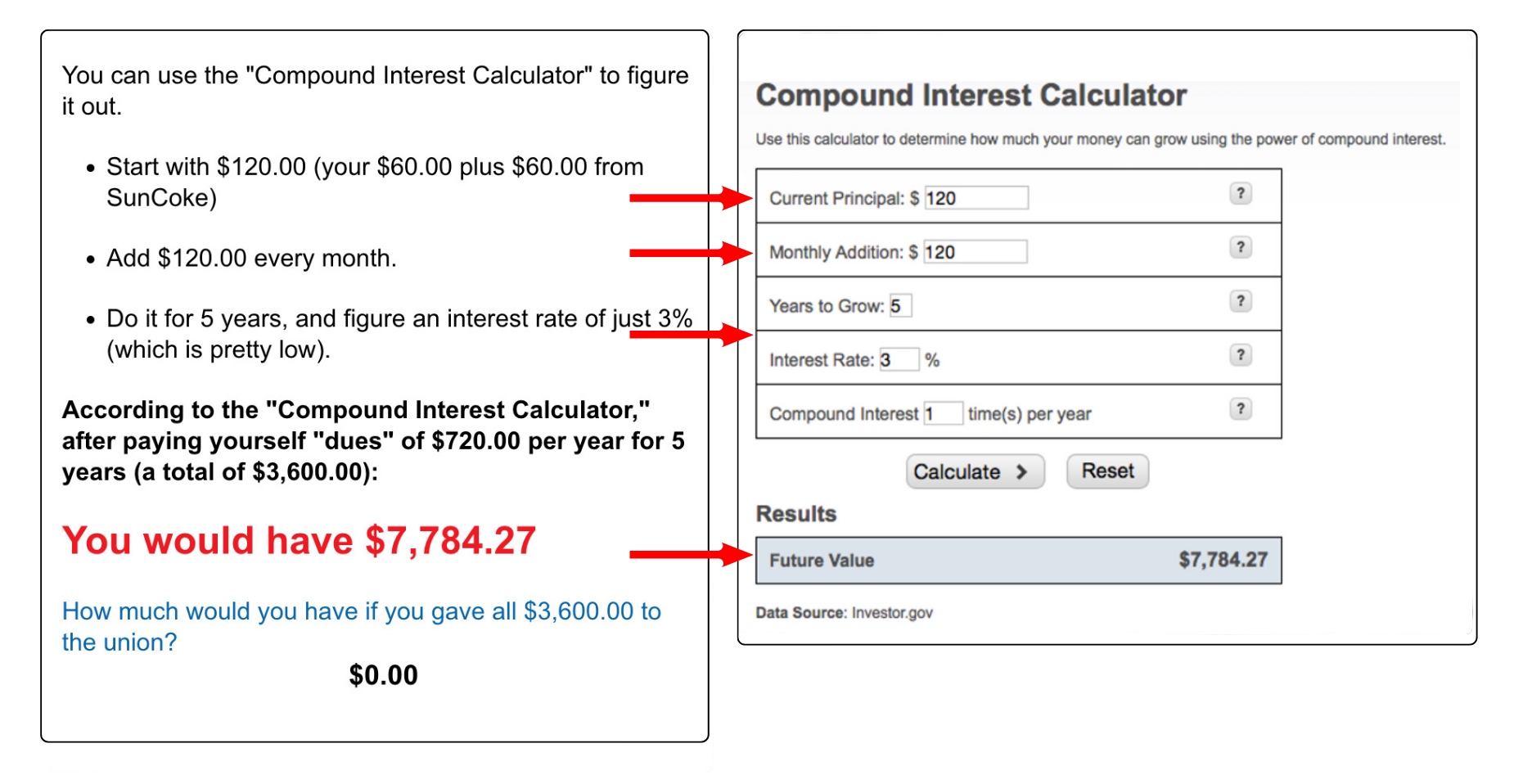THE REAL COST OF A UNION
You might think the cost of a union is what you would pay in dues, fees, fines, assessments, etc.
But there are two more ways to think about the cost of a union:
- What you don't make (because the union has your money)
- What you don't have (because you paid the union instead)
1. What you don't make (because you can't invest money you give the union)
Suppose dues are $60.00 per month, or $720.00 per year.
What would you make if you took that money and put it into a 401(k) where it's matched by you?

To use the "Compound Interest Calculator" and try out various amounts of investment and return, click here:
1. What you don't have (because you can't buy things with money you give the union)
Suppose dues are $60.00 per month, or $720.00 per year.
What could you buy with that money?
- The U.S. Bureau of Labor Statistics found that families on average go to the grocery store twice a week - and spend an average of $60.00 each time. That's the same amount as your dues.
- If the price of gas is $2.50 per gallon, you could fill a 12-gallon gas tank twice each month with the money you'd pay in dues.
THE BOTTOM LINE:
Without a union, YOU decide how YOU want to spend $60.00 each month, and $720.00 a year can pay for a lot of your basic life needs.
Or, if you invest that money, it can make you a lot more money.
Or, you can just give it to a union.





